Sea Surface Salinity (SSS) is an Essential Climate Variable (ECV) that plays a fundamental role in the density-driven global ocean circulation, the water cycle and climate.
The satellite SSS observation from the Soil Moisture and Ocean Salinity (SMOS), Aquarius, and Soil Moisture Active Passive (SMAP) missions have provided an unprecedented opportunity to map SSS over the global ocean since 2010 at a 40-150km scale with a revisit every 2 to 3 days. This observation capability has no historical precedent and has brought new findings concerning the monitoring of SSS variations related to climate variabilities such as El Niño-Southern Oscillation, Indian Ocean Dipole, and Madden-Julian Oscillation, and the linkages of the ocean with different elements of the water cycle such as evaporation and precipitation and continental runoff. In addition, it has enhanced the understanding of various ocean processes such as tropical instability waves, Rossby waves, mesoscale eddies and related salt transport, salinity fronts, haline hurricane wake, river plume variability, and cross-shelf exchanges. There is also an emerging use of satellite SSS to study ocean biogeochemistry, e.g. linked to air-sea CO2 fluxes.
Following the success of the initial oceanographic studies implementing this new variable, the European Space Agency (ESA) funded a new Climate Change Initiative (CCI) Sea Surface Salinity (SSS) project (2018-2025). The CCI+SSS project aims to generate improved calibrated global SSS fields over sixteen years (2010-2025) from all available satellite L-band radiometer measurements, with regional extensions utilising C-band radiometer data. This initiative seeks to leverage the full potential of the ESA/Earth Explorer SMOS mission, in conjunction with the SMAP and AQUARIUS satellite missions, by assembling expert teams in earth observation, satellite data validation, and the study of climate variability.
CCI+SSS is dedicated to delivering data products adapted explicitly to climate applications (i.e. including information on accuracy and uncertainty within the data). Furthermore, this project will explore the need to improve the performance of current SSS algorithm retrievals and directly contribute to climate science studies submitted to the following International Panel on Climate Change (IPCC) Annual Review for Climate Change in 2020. This initiative underscores the indispensable role of SSS in our understanding of climate dynamics, offering valuable insights for academics, students, environmentalists, and policymakers engaged in climate change research.
Frequently Asked Questions
What is SSS?
SSS stands for Sea Surface Salinity. For more information, please refer to the Useful Links section above.
Where can I find SSS data?
The Data section above contains links to data provided by this project. The Related Links section contains alternative data sources.
What is CCI?
CCI stands for the Climate Change Initiative, a programme initiated by ESA. For more information, please refer to the CCI homepage.
What is ECV?
ECV stands for Essential Climate Variable. For more information, please refer to the ECV Inventory page.
What is ESA?
ESA stands for the European Space Agency. For more information, please visit the ESA website.
What is EO?
EO stands for Earth Observation.
Access and search Sea Surface Salinity project data via the CCI Open Data Portal and visual analysis of the data is provided through the CCI Toolbox.
Sea Surface Salinity (February 2010 - September 2020) (Version 3.21) - interactive glone
The Sea Surface Salinity_cci project team comprises nine scientific and industrial partners from the UK, France, Spain, Germany and Luxembourg.
The following companies make up this consortium CCI+SSS Phase 2 (2022-2025):
- ARGANS Ltd (United Kingdom)
- Laboratoire d'Océanographie et du Climat (LOCEAN) (France)
- Laboratoire d'Océanographie Physique et Spatiale (LOPS) (France)
- Institut français de recherche pour l'exploitation de la mer (IFREMER) (France)
- ACRI-ST (France)
- AdwäisEO (Luxemburg)
- Ocean Scope (France) (Spain)
- National Oceanography Centre (NOC) (United Kingdom)
- Laboratoire d'Etudes en Géophysique et Océanographie Spatiales (LEGOS) (France)
- Nansen Environmental and Remote Sensing Center (Norway)
- MetOffice (United Kingdom)
- Mercator Ocean (France)
With additional support from the following external partners:
- Akhil, V. P., J. Vialard et al. Bay of Bengal Sea surface salinity variability using a decade of improved SMOS re-processing. Remote Sensing of Environment. 2020. https://doi.org/10.1016/j.rse.2020.111964
- Boutin, J., J.L. Vergely, E. Dinnat, P. Waldteufel, F. D’Amico, N. Reul, A. Supply, C. Thouvenin-Masson. Correcting Sea Surface Temperature Spurious Effects in Salinity Retrieved From Spaceborne L-Band Radiometer Measurements. IEEE Transactions on Geoscience and Remote Sensing. 2020.
- Boutin, J., S. Yueh, R. Bindlish, S. Chan, D. Entekhabi, Y. Kerr, N. Kolodziejczyk, T. Lee, N. Reul, M. Zribi. Soil Moisture and Sea Surface Salinity, review papersubmitted to Surveys in Geophysics. special issue Oceanography, Hydrology and Glaciology from Space. 2022.
- Boutin, J., N. Reul, J. Koehler, A. Martin, R. Catany, S. Guimbard, F. Rouffi, et al.. Satellite-Based Sea Surface Salinity Designed for Ocean and Climate Studies. Journal of Geophysical Research. 2021. https://doi.org/10.1029/2021JC017676
- Boutin, J. , Yueh, S., Bindlish, R. , Chan, S., Entekhabi, D., Kerr, Y., Kolodziejczyk, N., Lee, T. , Reul, N. & Zribi, M.. Soil Moisture and Sea Surface Salinity Derived from Satellite-Borne Sensors. Surv Geophys. 2023. https://doi.org/10.1007/s10712-023-09798-5
- Gévaudan, M., Durand, F., & Jouanno, J.. Influence of the Amazon-Orinoco discharge interannual variability on the western tropical Atlantic salinity and temperature. Journal of Geophysical Research: Oceans. 2022. https://doi.org/10.1029/2022JC018495
- Gibert, F., Boutin, J., Dierking, W., Granados, A., Li, Y., Makhoul, E., . ... Zhang, X.. Results of the Dragon 4 Project on New Ocean Remote Sensing Data for Operational. Remote Sensing. 2021.
- Olivier, L. , G. Reverdin, J. Boutin, R. Laxenaire, D. Iudicone , S. Pesant , Paulo H.R. Calil, J. Horstmann, D. Couet, J. M. Erta, P. Huber, H. Sarmento, A. Freire, A. Koch-Larrouy, J.-L. Vergely, P. Rousselot, S. Speich,. Late summer northwestward Amazon plume pathway under the action of the North Brazil Current rings. JGR-Oceans. 2022.
- Olivier, L.; Boutin, J.; Reverdin, G.; Lefèvre, N.; Landschützer, P.; Speich, S.; Karstensen, J.; Labaste, M.; Noisel, C.; Ritschel, M.; et al.. Wintertime process study of the North Brazil Current rings reveals the region as a larger sink for CO2 than expected. Biogeosciences 2022. Copernicus Publications on behalf of the European Geosciences Union. 2022. https://doi.org/10.5194/bg-19-2969-2022
- Olivier, L., Reverdin, G., Hasson, A. & Boutin, J.. Tropical instability waves in the Atlantic ocean: Investigating the relative role of sea surface salinity and temperature from 2010 to 2018. Journal of Geophysical Research: Oceans. 2020. https://doi.org/10.1029/2020JC016641
- Montero, M. Reul, Nicolas; Vialard, Jérôme; Brachet, Sidonie; Guimbard, Sebastien; Vandermark, Douglas; Torunadre, Jean. SSS estimates from AMSR-E radiometer in the Bay of Bengal: algorithm principles and limits. IEEE Transactions on Geoscience and Remote Sensing. 2022. https://ieeexplore.ieee.org/document/10217008
- Popp, T., et al.. Consistency of satellite climate data records for Earth system monitoring. Meteor. Soc.. 2020. https://doi.org/10.1175/BAMS-D-19-0127.1
- Reul, N. et al.. Sea Surface Salinity estimates from Spaceborne L-band radiometers: an overview of the first decade of observation (2010-2019). Remote Sensing of Environment. 2020. https://doi.org/10.1016/j.rse.2020.111769
- Reverdin, G., et al.. Formation and Evolution of a Freshwater Plume in the Northwestern Tropical Atlantic in February 2020. Progress in Oceanography. 2021. https://doi.org/10.1029/2020JC016981
- Stammer, D., M. S. Martins, J. Köhler, and A. Köhl. How well do we know ocean salinity and its changes?. Progress in Oceanography. 2021. https://doi.org/10.1016/j.pocean.2020.102478
- Supply, A., Boutin, J., Kolodziejczyk, N., Reverdin, G., Lique, C., Vergely, J.-L., & Perrot, X.. Meltwater lenses over the Chukchi and the Beaufort seas during summer 2019: From in situ to synoptic view. Journal of Geophysical Research: Oceans. 2022. https://doi.org/10.1029/2021JC018388
- Thouvenin-Masson, C.; Boutin, J.; Vergely, J.-L.; Reverdin, G.; Martin, A.C.H.; Guimbard, S.; Reul, N.; Sabia, R.; Catany, R.; Hembise Fanton-d’Andon, O.. Satellite and In Situ Sampling Mismatches: Consequences for the Estimation of Satellite Sea Surface Salinity Uncertainties. Remote Sensing. 2022. https://doi.org/10.3390/rs14081878
The following links relate to the Sea Surface Salinity project.
- ESA Sea Surface Salinity Climate Change Initiative (Sea_Surface_Salinity_cci): Version 3.2 data collection (in the CEDA Archive)
- New maps of salinity reveal the impacts of climate variability on oceans
Websites related to ESA’s SMOS mission:
- SMOS ESA EO Mission
- ARGANS SMOS [Level 2]
- Centre Aval de Traitement des Données SMOS (CATDS) [Level 3+]
- Barcelona Expert Center (BEC) [Level 3+]
- SMOS Pilot-Mission Exploitation Platform (PiMEP) ** CCI Salinity Validation reports
Website related to NASA’s Aquarius, SMAP and SPURS missions:
The following links provide supporting graphics and animations relating to the Sea Surface Salinity project:
El Niño and the sea surface:
https://www.esa.int/ESA_Multimedia/Videos/2024/03/El_Nino_and_the_sea_surface/%28lang%29
Oceans and climate:
Key contacts within the Sea Surface Salinity project.
Project Leaders:
- Scientific Leaders: Jacqueline Boutin and Nicolas Reul.
- Project Manager: Rafael J. Catany (rcatany@argans.co.uk).
ESA Technical Officers:
- Susanne Mecklenburg and Roberto Sabia (roberto.sabia@esa.int).
To run this example yourself, go to https://dashboard.climate.hub-otc.eox.at/. You can register for free.
The following links provide supporting graphics and animations relating to the Sea Surface Salinity project:
Latest news & events

CCI colocation & CMUG integration meeting 2026
Annual gathering of the CCI community for ESA programme updates, scientific progress, and forward-looking discussions.
Meer leren
New Position: Junior Professional in AI for Climate Science
Opportunity for early-career Artificial Intelligence talent to join ESA’s Actionable Climate Information Section
Meer leren
Working for ESA: procurement and proposal submission process
An Introduction to ESA Star - ESA's System for Tendering and Registration
Meer leren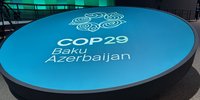
ESA at COP29
ESA is participating in COP29 to highlighting satellites' role in tackling climate change
Meer leren

Call for new projects: Additional Essential Climate Variables
New R&D procurement as part of ESA's CLIMATE-SPACE programme
Meer leren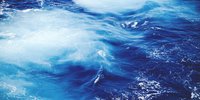
Ocean Salinity Conference 2024
The 7th International Ocean Salinity Science Conference, happening alongside the ESA CCI Salinity
Meer leren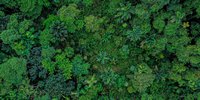
Open Competitive Tender for CLIMATE-SPACE Knowledge Exchange
ESA Tender Action Number: 1-12141. ESA Activity Number: 1000039650.
Meer leren
New Sea Surface Salinity Record Released
Version 4.41 provides a global record and improves high-latitude observations (2010-2022)
Meer leren
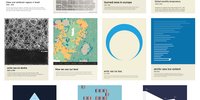
Little Pictures winner announced at COP28
Results of Europe-wide climate data visualisation showcased
Meer leren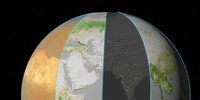
New Tender: CROSS-ECV ACTIVITIES Tender Action Number: 1-12062
New tender issued by the ESA Climate Office (Activity Number: 1000039196)
Meer leren











